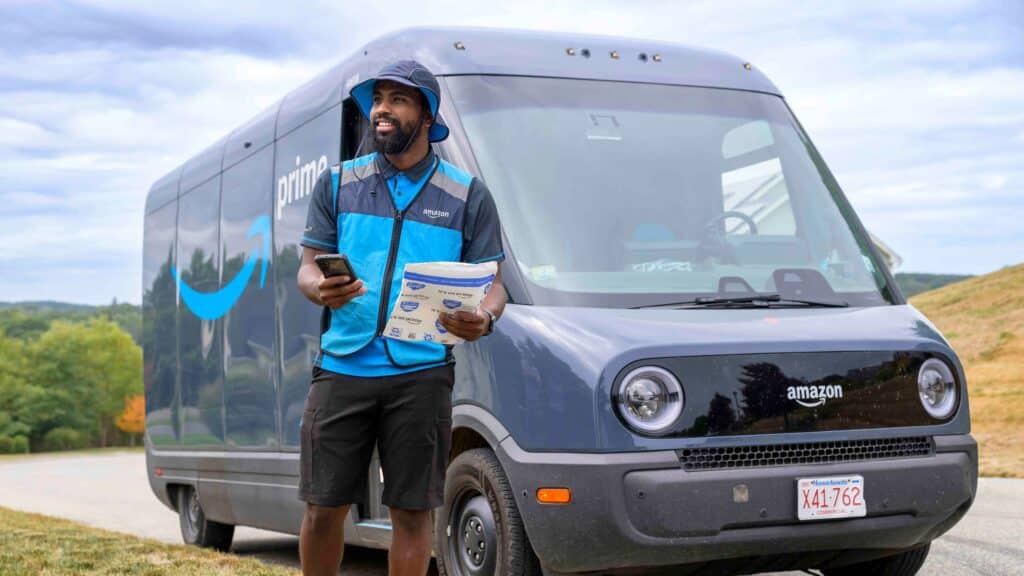Amazon continues to innovate in the logistics sector with the implementation of a new system based on artificial intelligence called Vision-Assisted Package Retrieval (VAPR), designed to accelerate and streamline the package delivery process. This technology, which will be available in 1,000 Amazon electric vehicles by 2025, promises to significantly reduce the time drivers spend searching for the correct packages at each stop.
How does VAPR work?
The VAPR system uses a combination of computer vision, artificial intelligence, and automotive light projectors to help drivers quickly identify the packages they need to deliver at each point on their route. When the delivery van arrives at the destination, the system projects a green circle on the packages that need to be delivered at that stop, and a red X on the other packages. This way, drivers do not need to check labels or addresses, but simply follow the light cues to select the correct packages immediately.
This innovative technology is based on the Amazon Robotics Identification (AR-ID) system, already used in the company’s logistics centers, which automatically scans product barcodes. Now, the same technology has been optimized to work in the environment of a delivery van, even in variable lighting conditions or tight spaces.
Promising results in initial tests
Pilot tests have shown positive results: VAPR has reduced the package search time from 2 to 5 minutes per stop to less than 1 minute, saving approximately 30 minutes per route. This time saving not only allows drivers to make more deliveries in a single day, but also improves their work experience by reducing physical and mental effort.
Bobby Garcia, a driver for Bloomfield Logistics who has been testing the system in Boston, highlighted the ease that VAPR brings to his daily work. "Before, it would take me between 2 and 5 minutes to organize the packages for each stop. With VAPR, that process only takes me a minute," he said. This technology not only speeds up deliveries but also reduces the use of mobile devices, as the entire process is automated.
A future driven by AI in logistics
With the implementation of VAPR, Amazon is not only looking to improve efficiency in its delivery operations, but also to offer a more precise and seamless experience for both drivers and customers. By reducing errors and streamlining the package selection process, the company hopes that the technology will benefit its vast network of 390,000 drivers and more than 100,000 delivery vans worldwide, delivering millions of packages daily.
This new AI system is part of a series of innovations that Amazon has been developing in its logistics operations. In addition to VAPR, the company has recently introduced new distribution centers powered by AI, underscoring its commitment to automation and process optimization.
What does this mean for the future of delivery?
The deployment of VAPR could mark a turning point in the last-mile delivery sector. With substantial time savings per route and reduced physical exertion for drivers, Amazon’s technology is designed to improve productivity without sacrificing accuracy. This not only benefits the company, which will be able to increase the number of daily deliveries, but also customers, who will receive their packages faster and more efficiently.
Although VAPR will initially be available in 1,000 Amazon electric vans by early 2025, its use is expected to expand to the company’s entire fleet in the coming years, solidifying Amazon as a leader in logistic innovation and package delivery.
The combination of artificial intelligence and automation will continue to be key for Amazon in its goal of transforming logistics globally, while seeking to improve both operational efficiency and customer experience.
Photo and information via: Amazon

